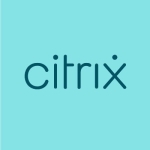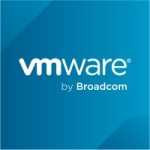What is our primary use case?
I use Proxmox VE to host a domain control environment, a Windows server environment, and to host a few apps that I publish on the store. I'm also using it to manage clients' remote surveillance backups because I keep my clients' CCTV footage.
I set up an NVR environment, and I'm pushing traffic to my servers. I'm running a mini data center. It's doing apps. It's doing Windows Server Management for a normal environment. It's nothing fancy, but it's working.
What is most valuable?
I like that it's secure, and I find its Software RAID very useful. It's way better than the Hardware RAID I was used to. I'm really impressed by their Software RAID feature.
What needs improvement?
Backup and recovery could be better. It's a bit problematic. If you're not well-versed with Linux, it tends to be a bit of a challenge when setting up and recovering. It's not really GUI-based, and if you're not a good Linux user, it becomes a bit difficult.
In the next release, I would like to have something like Hyper-V's Data Protection Manager, where you could do an offsite backup and keep a copy. I haven't seen that incorporated yet, but I'm sure they will do that.
For how long have I used the solution?
I have been using Proxmox VE for more than five years.
What do I think about the stability of the solution?
Proxmox VE is a stable solution. I don't have that much money to buy new hardware or new servers, and I have more or less deployed it on the old used servers I purchased online. It's been a breeze. Until I make money to buy the high-end servers, I'm just purchasing used servers or end-of-life servers, and they're running. For a third-world set up, they're running well. For 25-plus years, it's been a good solution for me.
What do I think about the scalability of the solution?
Proxmox VE is a scalable solution. When I get a new host or a new client, I'll probably buy a new server and add it to the node or the cluster. It's just a breeze. It's as simple as a click, and I have added it.
I have about 20 clients. My clients are about seven schools, gas stations, coal, utilities, a bank, two small microfinance banks, and the government.
I am thinking of doing more. I am thinking of setting up a mini data center with it because we have done the proof of concept for CCTV storage. People don't have the space or the money to do their own backup and store their own footage. Part of my solution is selling them storage that they can retrieve from their devices. I store their CCTV data in my data center and give them a remote view. You don't need to have an NVR.
When I sell a surveillance solution, you don't even have to have an NVR. Give me a firewall, and then I will point your storage to come to my server. I'm the one in the neighborhood storing information at the moment.
How are customer service and support?
The forums have everything you need. I haven't had any challenges because the forums are there. I have yet to get the paid subscription support. I have yet to find an installation that has given me a challenge that I can only resolve by subscribing for support.
Which solution did I use previously and why did I switch?
I was using Hyper-V from VMware, but Microsoft kept crashing. It takes a lot of investment here in Africa. I need to invest a lot in power because master machines crash. Windows and power are not the best of mates. After that, I moved to Huawei Desktop Protocol and Huawei Desktop Cloud. That also had issues with the support and licenses. Then we moved to Proxmox, and it's been working.
How was the initial setup?
The initial setup is straightforward. It was hard at first, but I went over the forums. After I went over the forums, I did the YouTube tutorials and videos, and after that, I managed my clients well without paying for a bit of support. Surprisingly, I have been running for about five years.
It doesn't take hours because I've deployed on two nodes, and I've deployed on three nodes. Currently, I'm running it on four nodes, and it's doing great. So, with every installation, I tend to get better.
On a scale from one to five, I would give my initial setup experience a four.
What about the implementation team?
I had some support. I've got over 12 years of experience working with Twitter, Uganda. Now Twitter, Uganda is a multinational, and the rest of the group supports the partners. I've had a bit of guidance when it comes to switching, routing, storage, and databases.
When I went out on my own, I used that background knowledge and the background skills I obtained through the years, and they helped me out. I didn't have any outside tech support to help. The tutorials were there, and the videos were available on YouTube.
I have a guy who does the power because he's got to stabilize the servers. Then I've got a guy who does the networking. He gives me the IP. He gives me the ports to connect. Then I have the guys who do the installation on-site, especially the Windows servers. I also have the Linux guys. It's a team of about four people. The rest are juniors or what we call apprentices. They help out here. I mostly use students to get the work done.
What was our ROI?
I'm definitely getting a return on my investment. I'm buying used servers, and I'm charging like I was charging for new servers, and I'm making a good profit on them. I'm repurposing servers, and I'm making a lot of money from repurposed servers using Proxmox, and they're running.
On a scale from one to five, I would rate my ROI at three.
What's my experience with pricing, setup cost, and licensing?
Proxmox VE is affordable. It's cheaper than Hyper-V, Huawei Desktop Protocol, and Huawei Desktop Cloud.
Which other solutions did I evaluate?
I made a comparison with Hyper-V and Huawei. I bought Proxmox because it's cheaper and more resilient to our power environment. We have very unstable power in the country, so Hyper-V and sudden breaches in power were problematic.
What other advice do I have?
I would tell potential clients about the ease of use. What's quite surprising is that Microsoft is going that way now, but these guys had that solution there back in the day.
Microsoft is doing Software RAID with Server 2019. These guys already had that solution back in that day. They're doing cloud spaces, but Linux had SAFE back in the day.
I'll tell them it's a cheap option. It's a stable option. I know Microsoft has done a lot in trying to get stable, but it's an affordable option. It's a stable solution, and it just works off the fly like that.
You watch the video, use a storage guy, have a power guy, and have a good networking guy. You could get the service up and running compared to having a Microsoft MVP somewhere in a corner or on-call somewhere.
The releases are killing us. It's like they keep releasing every year. I would wish for them to come with something very stable. They keep coming up with something new every six months because I think their release cycle is every six months. I'm trying to finish something, and they release something new altogether, and I have to migrate. I know the iterations are as minimal as possible, but it still has an impact.
On a scale from one to ten, I would give Proxmox VE a seven.
Which deployment model are you using for this solution?
On-premises
Disclosure: My company does not have a business relationship with this vendor other than being a customer.

















